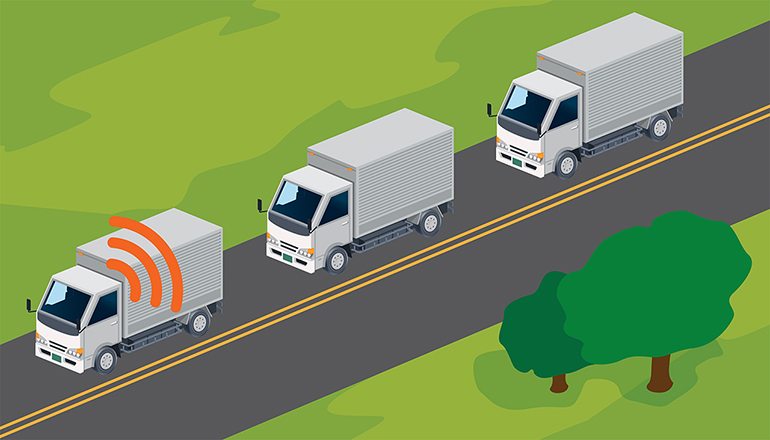(Missourinet) – Missouri lawmakers are considering a proposal that would allow semi-trucks to platoon at closer distances from each other.
Truck platooning allows trucks to follow each other closely, thereby reducing air drag and improving fuel economy. Platooning also has the potential to increase vehicle capacity on highways, particularly along freight corridors. A combination of production safety systems and connected vehicle technology allows trucks to closely follow each other in a safe manner by enabling the trucks to continuously communicate and coordinate travel with other trucks in close proximity.
Truck platooning deployed across the country is expected to improve national freight movement and the national economy. Tom Crawford, President & CEO of the Missouri Trucking Association wants the state to allow this.
Despite some being in favor of the measure, others say that this technology is unproven. Crawford says it’s not so much that platooning is illegal in Missouri, it’s that the technology is too new for a law to be in place. A vote hasn’t been taken on the bill.
According to the U.S. Department of Transportation, with truck platooning deployment and operations, the following benefits are expected:
- Promote technology innovation – Truck platooning uses commercially available adaptive cruise control and collision avoidance systems as key system components; it adds vehicle‐to‐vehicle communications to enable cooperative adaptive cruise control (CACC); and it showcases connected vehicle technology for enhanced stability and responsiveness of truck platooning operations.
- Technology acceptance/readiness – FHWA shares knowledge with stakeholders (State, local, and other organizations), prepares private industry/commercial operators, and informs the public of the benefits and limitations of the technology.
- Improved throughput, mobility, and road efficiency – Vehicle connectivity enables smoother and closer following-truck movement.
- Improved fuel savings and reduced greenhouse gas emissions – Early results indicate up to seven to 10 percent fuel savings for following trucks.
- Reduced operating costs for the commercial freight industry – Deployment at scale will have significant national economic benefits, including potential driver workload reductions and improved driving comfort


